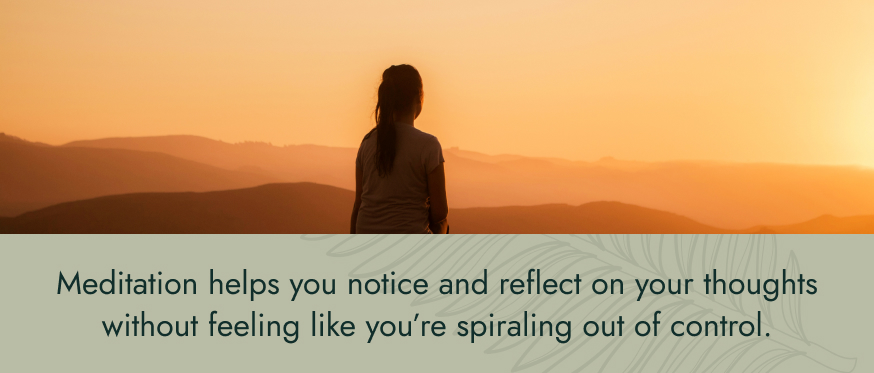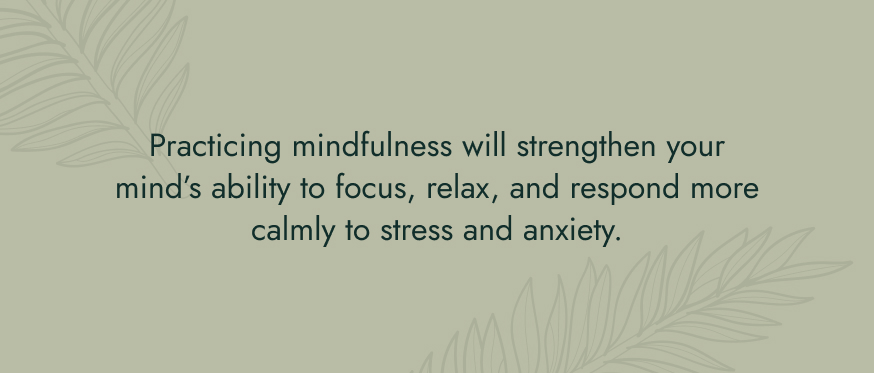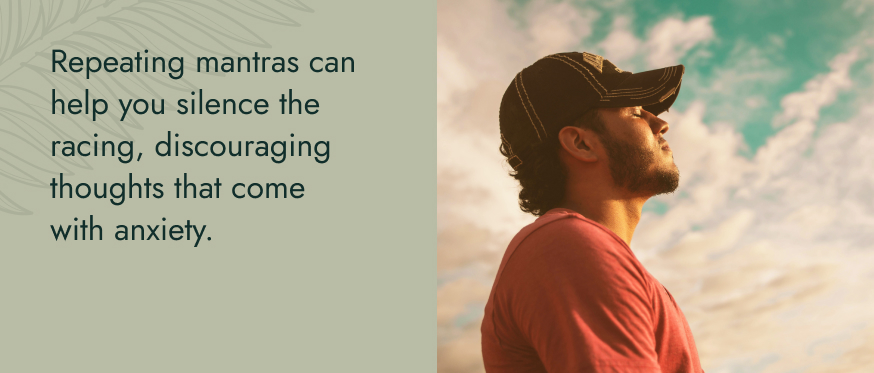Meditations for Anxiety—4 Meditation Techniques for Relieving Stress and Anxiety


Anxiety can feel overwhelming. Your thoughts race, your chest feels tight, and there's a constant sense of unease that’s hard to shake. When you're in that state, finding calm can seem almost impossible.
Sometimes, the most powerful tools for relief are the simplest. Meditation is one of them. If you’re looking for a deeper way to manage your anxiety, meditation offers a path toward greater peace, awareness, and emotional balance.
Even if you only have a few minutes to practice meditation, there are several techniques that can quickly help you alleviate your stress and anxiety.
How Does Meditation Help With Anxiety?
Meditation creates a safe, nonjudgmental space for you to observe your thoughts and feelings. Rather than trying to ignore your anxious thoughts or push away uncomfortable emotions, meditation helps you notice and reflect on them without feeling like you’re spiraling out of control.
Over time, meditation can also change the way we think and behave. In fact, according to the National Institute of Health, regular meditation is proven to create functional and structural changes in the brain. This means that mediation not only helps you in the moment, but it also improves the way your brain responds to stress, anxiety, and troubling emotions over time.

Get Help For Your Anxiety With Sequoia
Anxiety can be an ongoing battle, but you don't have to struggle on your own. Learn how we can treat anxiety disorders and help you live a happy, healthy life.

4 Effective Meditations for Stress and Anxiety
For many people, the word meditation brings to mind something mystical or spiritual. It can maybe even seem a little too "out there" to feel practical. But at its core, meditation is simply a way to pause, ground yourself, and create space in your mind for clarity and calm.
If you’re struggling with stress and anxiety, here are four effective meditations to help you restore your inner peace:
- Mindfulness meditation
- Body-scan meditation
- Mantra meditation
- Guided imagery
Let’s take a closer look at each meditation technique to discover how it’s practiced and how it helps relieve stress and anxiety.
Mindfulness Meditation
Mindfulness is the ability to be present in the moment and aware of yourself, your surroundings, and what you’re doing. You’re simply an observer in this meditation practice; you don’t have to fix, fight, or follow anything that comes up.
To practice mindfulness, you can:
- Focus on your breaths
- Observe physical sensations
- Notice your thoughts and emotions
- Bring awareness to sounds around you
- Return your focus back to your breaths or body
Even if you can’t set aside time to meditate, you can still incorporate mindfulness into daily activities like going to work, taking a shower, or exercising. Over time, practicing mindfulness will gradually strengthen your mind’s ability to focus, relax, and respond more calmly to stress and anxiety.

Body-Scan Meditation
Sometimes, our minds get so distracted with what’s going on around us that we completely ignore what’s going on in our own bodies. Body-scan meditation helps you slow down, refocus your attention, and assess the physical sensations in your body.
To practice body-scan meditation, you can:
- Get to a quiet, comfortable place
- Lie down and close your eyes
- Bring your attention to the top of your head
- Simply take mental notes of the sensations that you notice
- Slowly move your attention down your body, pausing at every body part
- Continue the process until you reach the bottom of your feet
- End the process by slowly bringing your attention back to your surroundings
This meditation technique helps you relax your nervous system and alleviate stress and anxiety in both the body and mind. It can also help you identify the parts of your body where pent-up anxiety and tension are stored. If the anxiety in your body feels intense, you should consider pairing this with other techniques and talking to your therapist.
Mantra Meditation
Mantras are affirmative words or phrases that feel empowering, grounding, and meaningful. To practice mantra meditation, you should find a quiet and comfortable space, gently calm your mind, and continuously repeat your mantra either out loud or in your head.
Some common mantras that you can use for this technique include:
- Peace
- Let go
- I am safe
- I am loved
- I am strong
- This too shall pass
Repeating mantras can help you silence and replace the racing, discouraging thoughts that you may have when you’re feeling anxious. It also helps you reduce distractions, calm your nervous system, and bring you back to the present moment feeling grounded and in control.

Guided Imagery
This meditation technique has someone visualize peaceful or positive images in their mind. These images are usually narrated by a guide, but you can also practice guided imagery on your own by imagining a calming scene or recalling a memory that brings you comfort.
Some of the images that you can visualize during guided imagery include:
- A peaceful location, like a beach at sunset
- A quiet forest path surrounded by trees
- A cozy room where you feel completely safe
- A moment of personal strength or a desired outcome
- Your future self as calm and confident
Guided imagery is a powerful tool for managing anxiety, as it triggers the body’s natural relaxation response to stress. By immersing yourself in calming mental images, you can slow your breathing, lower your heart rate, and shift your focus away from troubling, anxious thoughts.
Read our complete guide for more information on anxiety disorders and how they’re treated.
Related Blogs

Mindfulness Breathing Exercises
Breathing exercises have many benefits in regards to your mental and physical health—from relieving stress and anxiety, to regaining your daily energy.

Mindfulness Movement Exercises
From simple pivots to advanced stretches, mindful movements should be integrated into your daily routine to make you feel better mentally and physically.

What Does it Mean to be Grounded?
Being grounded is a result of mindfulness and emotional regulation and stability. Learn what it means and how to get there.
Support Your Mental Health and Inner Peace
Meditation is more than just a relaxation method. It’s a powerful tool for managing anxiety and its symptoms. When you’re more aware of your negative thoughts and how they affect you, you can begin to respond to them with greater calm and clarity.
If you’re struggling with anxiety, Sequoia Behavioral Health is here to help you regain control. Our mindfulness-based cognitive therapy combines mindfulness practices with cognitive behavioral techniques to help you break negative thought patterns and build healthier coping skills.
Reach out today to connect with a mental health professional and take the first steps towards managing your anxiety.
Learn More
Dialectical Behavioral Therapy
Dialectical Behavioral Therapy (DBT) combines strategies of Cognitive Behavioral Therapy with mindfulness and coping strategies.
Mindfulness-Based Cognitive Therapy
Mindfulness based cognitive therapy utilizes mindfulness meditation in order for clients to connect and alter their thoughts and emotions.
Emotional Freedom Techniques
EFT is a holistic therapy that combines acupressure with cognitive and exposure therapy to alleviate emotional distress and promote overall well-being.
Sequoia can treat anxiety at the inpatient and outpatient level, and our team will help you even after you're discharged from our care. Learn about our different levels of treatment and ongoing care.


